The Rates: Low on Austin glam-punk, ecstatic cacophonies and machines that channel your soul
We ask the Duluth legends to share three artists who they think have gone underappreciated, and three new names who they hope will avoid a similar fate
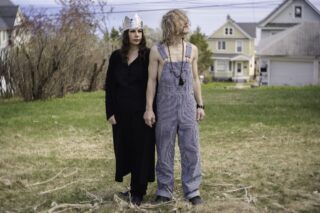
We ask the Duluth legends to share three artists who they think have gone underappreciated, and three new names who they hope will avoid a similar fate
There haven’t been many live music highlights in the past 18 months, but one consistent pleasure has been the Friday I’m In Low series, a weekly 20-minute home concert beamed straight from the Minnesota living room of Mimi Parker and Alan Sparhawk, the married couple who formed Low in 1993, over Instagram Live. Unadorned and intimate, shot on a phone by their daughter Hollis, the shows are free of any live-stream circus tricks or commercial imperative, and instead capture everything that’s heartwarming about the band: the homespun warmth, the cathartic, sparse beauty of their songs, and the couple-goals chemistry of Parker and Sparhawk that showcases their pure joy at singing together. Add to that, since the arrival of spring, occasional tours of Sparhawk’s vegetable garden, and it’s a perfect prescription for beating the lockdown blues.
It turns out, too, that Low needed the sessions just as much as their audience. “Oh yeah, the Instagram Live thing was key to keeping us engaged,” explains Sparhawk from his dining table in Duluth. “On tour, you’re singing every day, and singing great, and then two weeks later, you come off tour, and you notice, when you go to church or something, you’re not singing so well, and your voice kind of slipped away somewhere. Well at the start of all this we thought we might just take a break and chill, but then part of our minds were like, man, you got to stay with this, otherwise you’ll lose it.”
Out of that conscientious persistence blossomed the ten songs that comprise Hey What, Low’s 13th album and first since 2018’s confrontational, ultra-distressed Double Negative, the kind of alarming, comfort-zone-escaping record that few bands make in their 25th year. Like its immediate predecessor, Hey What sounds unmistakably Low-like but simultaneously alien, fractured and glistening, with just as many moments of crystalline beauty as harsh noise – which, says Sparhawk, is all part of the plan: “Every time in the past where we’ve done something extreme, we were glad we did it. And the few times where we’ve held back, we’ve kind of regretted it later.”
“I feel like we’ve gotten to a point where we can gamble,” adds Parker, sat on her husband’s right, nudging him lovingly whenever he begins to ramble. “We have a legacy now, but I’d like to think that it’s dynamic, and we didn’t play it safe. Some bands have stuck with what they’ve done from the beginning and been hugely successful,” she adds, “but for us, we’ve never had so much success that it’s made us say, ‘We’ll stick with this.’”
“There’s never been enough success to stop us from keeping on stabbing around in the dark, essentially,” laughs Sparhawk. “Although the world’s full of countless examples of great artists who stay true to their form, and some of them die unrecognized, but there’s no denying the integrity of what they did, especially if it ran counter to what we were wanting to see.” It’s an observation, I suggest, that provides a good segue into his introduction to his and Parker’s favourite underappreciated acts.
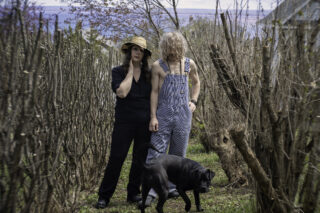
SW: I saw these guys at an ATP about 15 years ago – it was a wild ride.
AS: Yeah that sounds right. They had costumes, and very much interacted with the audience, right where the line between the band and audience is blurred, and it was always this lots-of-people-on-stage-making-a-cacophony-of-ecstatic-music thing. I don’t want to name names, but there’ve been several bands in the last 15 years that have taken that formula and made a more accessible version of it, based on what I feel the Danielson Famile pioneered.
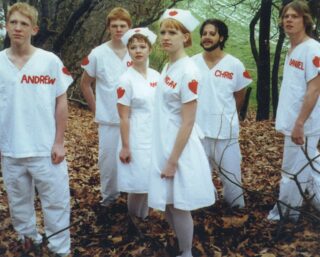
SW: It’s interesting you’re drawn to that as a performance style when the Low live aesthetic is almost the opposite.
AS: Yeah, I guess it is in a certain way, although I do try to reach out and make it a communal thing. We definitely feel the responsibility of the room, and want to be reverent to that. The Danielson Famile aesthetic was different – much more outreaching, much more ecstatic and open – but still with similar goals to us: they’re trying to try to create a moment, trying to respect the power of people being in a room all focused on one thing, and maybe even shaking at the same frequency, and I guess we’ve always had reverence for that too. When you’re recording, if you’re in a safe place, and can feel comfortable with the people around you and really immerse yourself into the spirit of what’s going on, the studio will capture moments where real electricity came in, moments of epiphany and real transcendence, and that’s important. On stage, though, I’m probably more guarded about that, even though I try not to be self-conscious of the fact that people are there and looking.
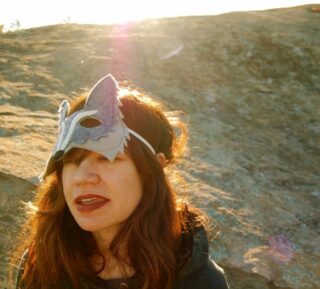
AS: She’s brooding, quiet, sometimes loud. She had a phase as a three-piece, her on guitar and these two guys from North Carolina that we knew playing bass and drums, and it was heavy. It was around the time when indie rock was a little lighter, maybe 10 or 12 years ago, and she was just going deeper and harder: she took playing loud guitar in a dirty rock band to a new level. It was a little like when PJ Harvey had that first three-piece and she was so on fire, but with Shannon just even more, to the point where I think a lot of young audiences at the time couldn’t deal with it. She was too intense for what people were ready for, too bright for unprotected eyes. But I always thought she was an absolutely true original artist. She’s a source, not an interpreter.
SW: She has loads of albums. Where would you recommend starting?
AS: Oh, Jeez. Go with the one with the song ‘Captain of the Quarantine’ on it [1999’s Flightsafety]. I loved the records she was doing when we were touring with her around 2002, and then there was another piano record she did more recently [2019’s Providence] that was really stunning. I saw a few of those shows where she promoted that, and that was equally intense. She’s a really dynamic and committed performer, a total cornerstone for me.
SW: I was listening to their track ‘Maybelle’ and thought I heard you on backing vocals, Alan. Is that right?
AS: I can’t remember if I sang background on that one in particular, but there was definitely back and forth between us: we were recording and they’d do stuff with us, and then we’d do stuff with them. We were tight for a few years and toured together like, woah, 20 years ago.
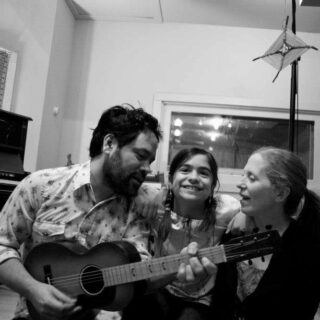
MP: Oh yeah that was the tour just after I’d had Hollis, and Liz [Ida’s lead singer] was pregnant. So I would stay at the hotel watching Hollis while they were opening for us, then after their set Liz would come back to the hotel and we’d tag-team it so I could come and do my set and she could watch the baby for us. It was a good arrangement!
SW: They’re another band with a couple at the centre. Do you think there’s something different about the dynamics of a band where there’s a couple?
AS: Yeah I think so. You’d think it could be problematic, because the couple would always be a team, but that doesn’t always happen! The band and music really opens that up, and you’d be surprised how the siding falls, with one of us siding with the other person and against our partner.
MP: Yeah, it’s a weird dynamic for the third person sometimes, for sure…
AS: … but it’s probably contributed to the longevity of the band.
MP: Definitely. You commit to marriage and so you commit to the band.
AS: Yeah, the marriage puts an extra bond on the band. But it works both ways. There are definitely things about being in the band that enhance the marriage: the fact that we’re doing something that’s creative together and struggling through the ups and downs of that – that’s the stuff that enhances a relationship. Like, who wouldn’t want to go on the road and be creative and do something with the person they love, you know?
MP: [laughing] Really? Like, 24/7?
AS: A stressful time on tour can translate to stressful relationships, sure, but sometimes the relationship is what gets you through the stressful times.
SW: Do you feel a kinship with other bands that have couples in them?
AS: We don’t seek them out, but it’s interesting to wonder how they do it, because every one must have a completely different dynamic for deciding what they want, and how the other person interacts with that. And that can be good and bad, you know – like, Thurston Moore and Kim, I mean, that was really sad, and probably not a very fun thing to have fall apart, but Yo La Tengo still look like they’re having fun. We played with them at a festival a few years ago – it was the first time we met them, and they were really nice! I always thought they might be like snooty New York record-collector people, but they’re super nice and I was like, why haven’t we been hanging out with these guys for the last 10 years?
AP: Everybody has those stories of walking into a record store and being like, holy crap, what’s this, and then they have a favorite band. Well, I first heard Colleen when we were over in Holland a few years back, doing press. Someone had her first record on in the background, and I was like, wow. I love how she manages to make machines channel her soul. I think it’s interesting when you’re using machines or a computer that our brains crave humanity. They want to know where the creative human decisions are. Like, is there a way to shape the sound so it’s reminiscent of something more human, to interject slight randomness that makes it more organic? With Colleen, there’s something about the way she tips the machine into a process that sounds alive. Maybe it’s all in my head, but there’s something so human about it, and that’s important because subconsciously the second the mind hears that there’s a human in there, then there’s permission to internalise and connect with the music.
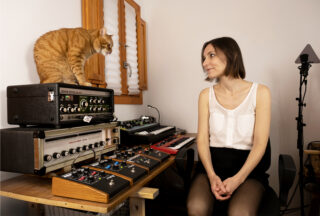
SW: Do you think that extends to things like effects pedals? They’re still basically machines that make noise, after all, and fairly important to the soul of recent Low records.
AS: That was one of the things we were thinking about with this new record. I’d written all this stuff on guitar, but I don’t want to hear the guitar anymore. So the question became how do I turn it into something that doesn’t sound like a guitar, and a lot of what’s going on is just that. It’s generated organically, but then the effects unit is reading it and reacting synthetically, so you get this sound that’s more human than just a sequencer going boop-boop-boop-boop boop-boop-boop in regular perfect timing. It’s synthetic, but it’s being triggered and generated by something very complex and organic. I think as long as you set the machine up so you can put your soul into it, then the machine will translate that soul in a way that’s hopefully interesting and engaging.
AS: Just before the pandemic, our manager and I shot a few episodes of a TV show called Vansplaining – they’re on YouTube now, check it out – where I meet bands on the road and just hang out with them for the day, help them unload the van, talk through what they do while touring and then help them load out.
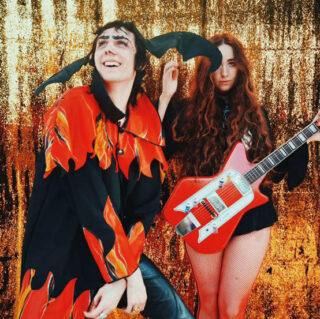
Anyway, one of the bands we did was Lord Friday the 13th from Austin, and I think they’re just really great. They’re dynamic, they have a pure love for creative endeavour, and they’re an affirmation to me that the new generation that’s coming up now are really poised to figure this shit out. Sure, they’re gonna have their handicaps, because of the way the world has been, but I think they see everything around and they’re gonna float above it and show us all how to not get mired in our pretense and preconceptions. I think these guys are interesting because they’re young, and they love the idea of what rock and roll does, but they don’t have any history or connotations coming with it, and that’s so exciting.
AS: Joe’s a Native American guy, and a singer and drummer. Where we live, the Native culture is pretty prominent. In the past it’s been pretty ugly because of the oppression that the Natives have been subjected to, but the community is starting to re-establish and share what they have. There’s a lot of that here where we live, so you get exposed to it growing up, but for me lately that music has been very powerful. I can actually look at a few songs on our new record and see how they totally came out of Native music: the melodies and the way we deal with rhythm, in particular, are totally Native American rhythms – there’s no backbeat, or at least it’s less prevalent. Anyway, Joe right now is working on a record that I think, once it’s done, is gonna really blow people’s minds, and change the perspective of Native American music.
SW: What is it about Native American music that appeals to you?
AS: It’s simple, it’s easy-access, and yet it’s very deep and nuanced, and unabashedly spiritual. There’s an understanding that every time you sing or drum, you’re calling up your ancestors, and this is all the shit rock and roll wishes it was.
SW: It’s more authentic?
AS: Er, yeah! Have you listened to that stuff? Smashing the crap out of the drums with people wailing in the background, it makes your hair stand up on the back of your neck.
Photography by Nathan Keay